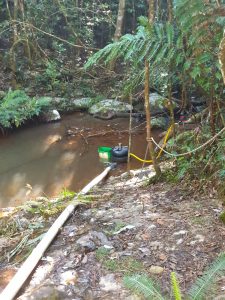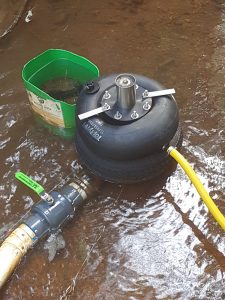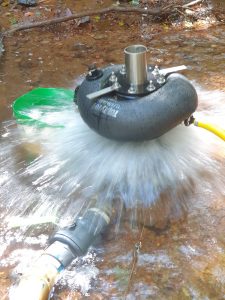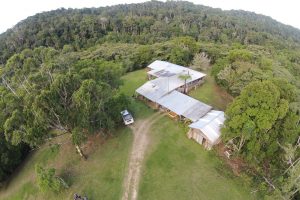Ever wondered how you would fare without devices electrical or electronic? I got a taste recently with the failure of multiple systems. So many it’s hard to get them in the right order. I think the first to go was the phone. Not the phone in my house sitting on the breakfast bar, but the landline connecting me to the rest of the world. Bang! a great clap of thunder obviously very close. No warning rumbles, no rain, just bang. It took me days to notice there was no phone. The average number of phone calls I make in a year is about 10. That’s right, less than 1 a month. I don’t use a mobile phone, so that is my total contribution to phone traffic. I have given up using a modern answering machine type phone as they blow up very quickly with lightening even many kilometers away. The last one I bought at Harvey Norman, I quipped to the check-out guy “these make great lightening detectors”. He was not amused. So I use a 40 year old Telstra phone with no electronics and took it to somewhere with a landline to check it still worked, and it did. So the fault is in the line. Next I had to try and raise some interest in fixing the line but I had bundled landline costs with my satellite internet provider, skymesh, to save $10 a month. I don’t think the satellite people have a shovel to their name. After two weeks of form filling, they has passed the problem over to Telstra. If Telstra fix the problem in 2 months I would be surprised.
The next problem was another lightening strike with no rumbles or rain, so no chance to pull the plugs. I heard exploding electrical equipment a fraction of a second before the wall-rattling clap of thunder. I dashed outside to find the inverter which powers Possum Valley on fire with flames coming out of both ends. I had a moment’s dilemma to ponder saving the house from burning down or trashing the the rest of the electrical equipment by hosing down. The flames subsided before I made the choice. Later tests showed that also the battery charger and a relay also blown up. About $1200 of damage .
Next, I notice that I haven’t received email for a few days. OK, accommodation inquires are sporadic, but spammers are reliable. Problem here, so I spend many hours on the internet trying to fix the problem. I blunder around in circles, logging on here and there trying to prove I am me. Without success. Then my website goes offline and I cannot contact that either. Then my browser goes crazy and will only report “can’t connect” to my website and when I try a new tab, it just repeats the same. I get my emails by webmail. I’m fucked. No connection to the rest of the world.
Then in the hazy, dreamy hours before dawn, I remember that my website is hosted by a long-time guest and perhaps he hasn’t paid the domain name fee. I wouldn’t blame him as I neglected to forward him the money for a couple of decades now, but maybe that is the problem. But I have no way to contact him and do a bit of groveling about my negligence. Then I realise perhaps I do have a way to send an email as my daughter had come from Darwin and stayed here a few days and installed to my computer a Microsoft suite that included outlook. Great, but I don’t have the email address of my website host as I got a new computer in Dec and lost my contacts. Bugger. Then I find a faded business card on my cork board from 20 years ago. For a company he folded long ago. You see how slim and desperate my chances are of contacting him, but I tried anyway. Through this narrow keyhole of opportunity, he got my email in a plane over Timor Leste while returning from a holiday in the Philippines. He plugged in his noise cancelling earphones and fixed my internet problems from a middle seat on a plane.
Then I have a more local issue. No power from the hydro. No way I am going down the steep treacherous track in the dark, so I wait till morning. First light I get down there to find the hydro screaming round at double speed, high speed water powering out of the back of the casing having smashed a hole in the aluminium. I shut it down. I know either there is no load on the generator, or the generator has failed. Using a multimeter, I test the power lines for continuity to see if a tree has fallen and cut the lines, but all OK. OK, generator then. I visually check connections and brushes. All OK. The only electronic device on the generator in a rectifier, which I change for a new one. Still no power.
I have a very old generator in the shed which had failed, but I think I have repaired with a new rectifier, but had not tested. I need a power source to test and this is my little tractor’s PTO. I squeeze it through my workshop doors and hook it up with a belt drive. Hurrah! We have volts! Not as many volts as required, but the PTO is well under the required RPM. Good. All I have to do now is swap generators. Hmmm. Generator 85 kg. Impossible terrain. Steep to nearly vertical. Slippery. I have done it before with the help of my son-in-law Blue, but it was a huge struggle. I am older and weaker and did not believe I could pull my weight. Still, I put the hard word on Blue, but suggest he find another to help. He calls in one of his brothers, Marty, who he describes as “pretty strong”. All Blue’s brothers are farmers who are not unacquainted with hard work, mud, rain and difficult jobs. So Marty turns up, 100kg of muscle and sinew to do much of the heavy lifting. Just a well, as I was at the limits of my strength just assisting. They left, I went down to the hydro to make the final connections, and with some trepidation, fired it up. It started, purring like a kitten and I knew all was well. If your power goes off, you wait around with increasing frustration for somebody else to fix it. Well, here there is no ‘somebody else’. I feel relief that I have managed the difficulty. I have fixed it and not wasted the strenuous efforts of friends who heroically came to help me.
A big thanks to those who help me without need or obligation or payment. Perhaps the message here is to return a favour, or even better, do a favour without expectation of it being reciprocated.







